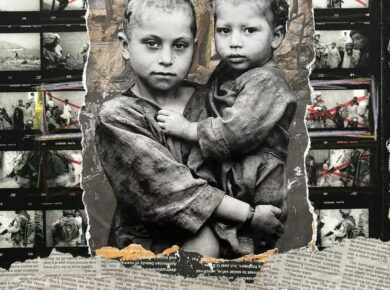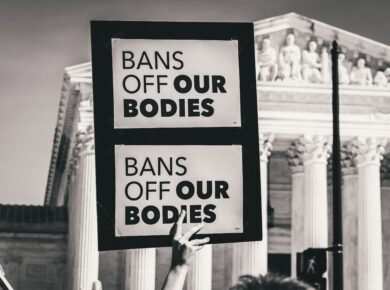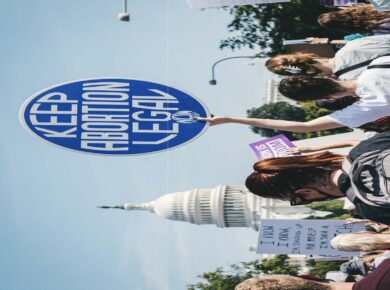Disclaimer: This blog post solely reflects the opinion of the authors and should not be taken to represent the general views of IPPR’s management team or those of fellow authors.
Source: Creative Commons
What lies ahead for the war-torn nation of Yemen? This was a question Chatham House fellows Peter Salisbury, Farea al-Muslimi and Ghaidaa Al-Rashidi gathered to address last month on the 23rdof January; the answer? It’s complicated.
Things were looking up for Yemen following the Stockholm agreement, negotiated in December 2018; the deal – between the Iran-backed Houthi rebels and the Yemeni government – covered a ceasefire in the key port of Hodeidah, prisoner exchanges, and a statement of understanding on the city of Taiz. However the difficult nature of the talks was something Peter Salisbury stressed when expanding on the troubled roll-out; both sides emphasised that their participation was for humanitarian reasons only, and it has been reported that the representatives of the two parties refused to sit in the same room, forcing UN mediators to move between them.
Although an agreement was reached, it was at the last moment, covered the bare minimum, and only came after the Saudi government pressured the Yemeni government to sign, according to Salisbury. The complicated implementation has suggested that both parties had very different interpretations about what the agreement entailed. While Yemen may be in a better place than before Stockholm, both sides are still getting bogged down in disagreements about the details.
The Stockholm agreement is a good place to start. From Salisbury’s perspective, if it is implemented successfully, demilitarisation of the Red Sea corridor (along Yemen’s west coast) as an extension of any agreed upon ceasefire can occur, potentially resulting in greater incentives for a political agreement between warring factions. Farea Al-Muslimi disagreed, suggesting that the agreement was a missed opportunity and suggested more could have been done about demilitarisation of Taiz. Moreover, if fighting successfully ceases in Hodeidah, there is a possibility other surrounding areas will be targeted by the displaced militia instead.
These type of regional complexities within Yemen as outlined by Al-Muslimi were emphasised multiple times as adding to the difficulty of reaching peace. The Houthis are based in the north of Yemen and have forced the government (now based in the southern city of Aden) out of the capital, Sana’a, while multiple other factions reside in the south, each with a different agenda.
Ghaidaa Al-Rashidi gave an example of the two most powerful rebel groups in Hodeidah; both are supported by the United Arab Emirates but each support different sides of the conflict. Should the larger civil war end, smaller regional conflicts could follow all over the country. Some of the southern groups also have ideological differences with the Houthi rebels. Combined with their lack of political organisation, Al-Rashidi suggested this could lead to them becoming an antagonist militia, should the war end and Houthis come into government. Both Al-Rashidi and Salisbury emphasised that the international community’s focus on the larger war, rather than these regional complexities will be detrimental to peace efforts if the war ends. These tensions and ideological differences need to be dealt with in current peace talks in order to have a fighting chance of maintaining stability two years down the line.
The abundance of local militias and rebel groups doesn’t bode well for the political situation post conflict. When asked about their potential for establishing structures of local government, Al-Muslimi lamented that there are “no adults in the room” but just rich countries with lots of oil and guns. This raises the question of whether the west should get involved post-conflict, given their checkered history of state-building. Although having a leader (or leadership) installed by the west may seem like a convenient option, it could lead to Yemeni elites fighting for control over this access point to the international community and the resources it commands. Such a leader would also command little legitimacy with the larger population, something that would likely be detrimental to future prospects for peace and democracy. Current state-building policy needs an update, Salisbury suggested, and it should in the future become “more diffuse” and less concentrated on one actor, or set of actors.
Towards the end of the panel, the issue of proxy wars was raised by an audience member. Although different sides of the conflict are receiving support from countries such as Saudi Arabia and the United Arab Emirates, “the real fight is just between the Yemenis”, says Al-Rashidi. On the other hand, Al-Muslimi painted the conflict as “a combination of civil, regional and proxy war”, with problems between President Hadi and the Houthis, Saudis and Iranians and between Yemenis.
For many, there is little incentive to stop the fighting, according to Al-Muslimi. The war “has established itself as an industry” meaning that “so many cannot afford peace, or even victory.” This, Salisbury added, extends to the new elite of Yemen, who “control the levers to get things in and out” of the country, along with those who control the ground and can impede or facilitate access of food, aid and military supplies. These parties benefit from the resources and power their positions grant them, meaning that unless they receive substantial financial and power incentives in a new Yemen, they will likely spoil any attempts at peace.
While the speakers reached no definitive conclusion about what Yemen’s future holds, it is clear that it could be messy. The end of the civil war will bring with it new problems, including regional conflicts and the question of how to establish a political system in such a divided society. However, with recent peace talks failingfollowing Houthi ceasefire violations, the end still seems a long way off.
You can listen to the talk here: https://player.fm/series/chatham-house-podcast-content/yemen-in-2019-a-look-ahead-HrQtbUPNoOBSEWm7
Speakers were:
Farea Al-Muslimi: Chatham House Associate Fellow, Middle East and North Africa Programme
Ghaidaa Al-Rashidi: Assistant Researcher, Sanaa Center for Strategic Studies
Peter Salisbury: Chatham House Senior Consulting Fellow, Middle East and North Africa Programme
Chair: Dr Renad Mansour: Chatham House Research Fellow, Middle East and North Africa Programme







